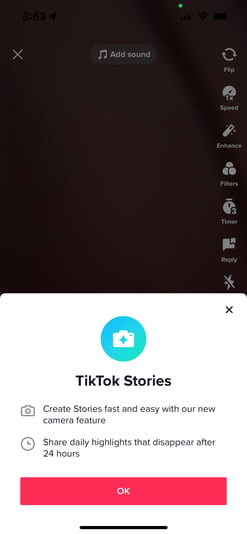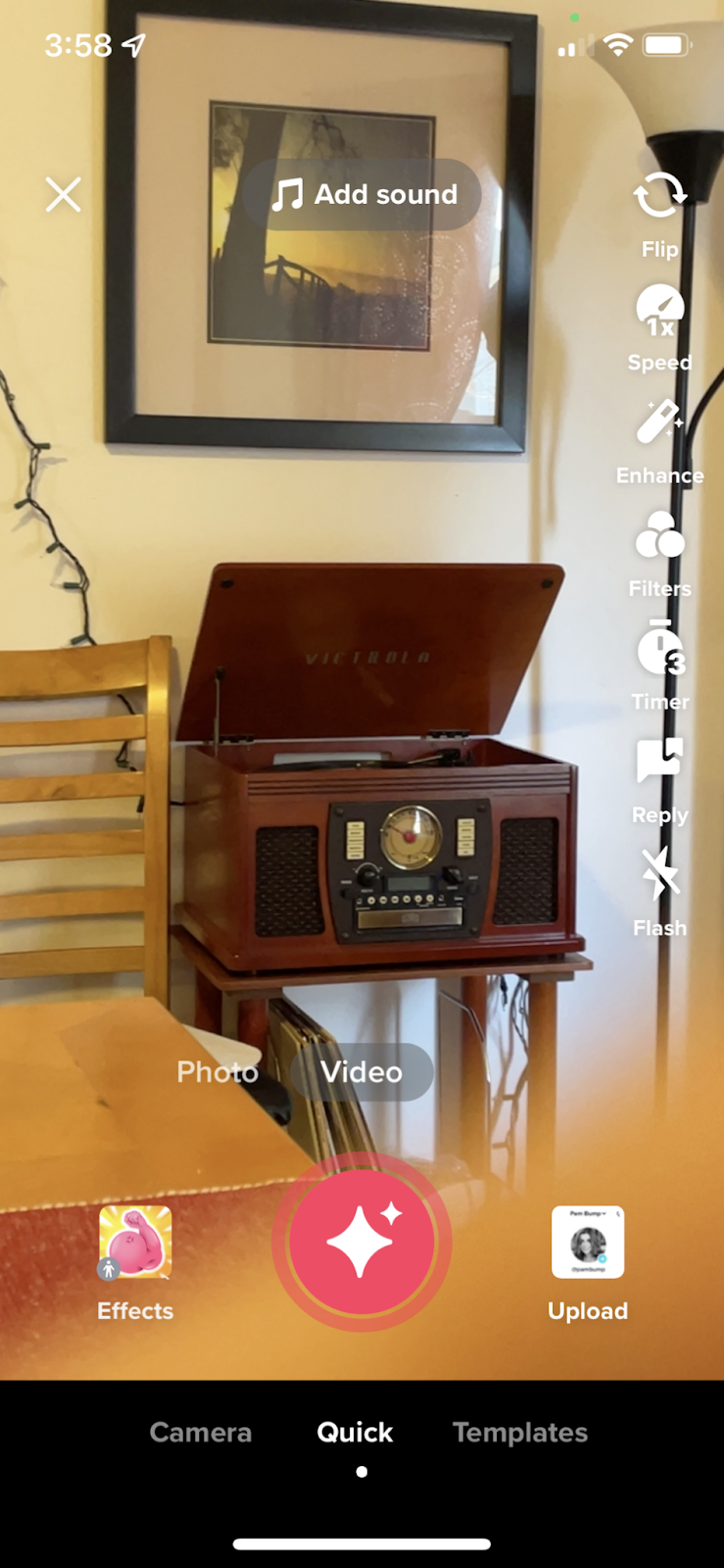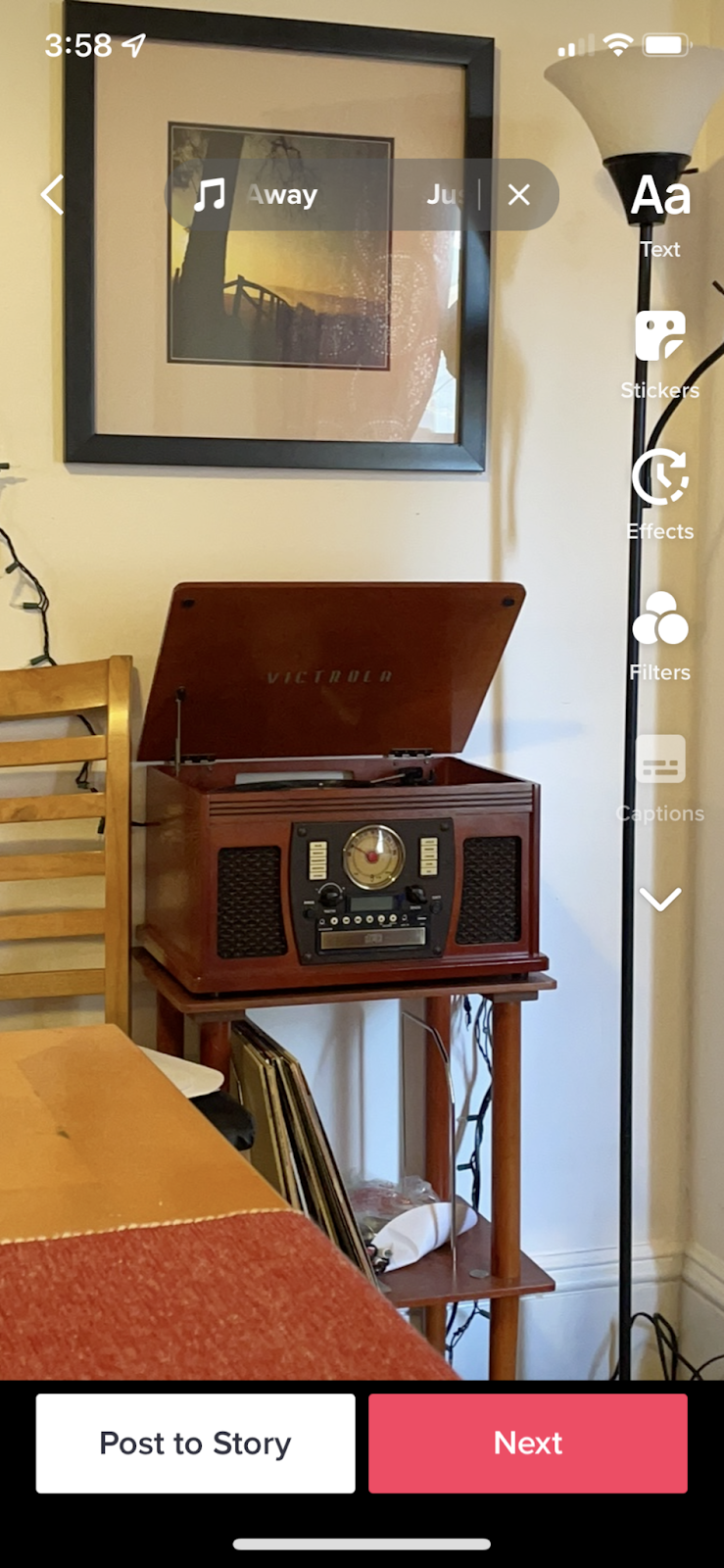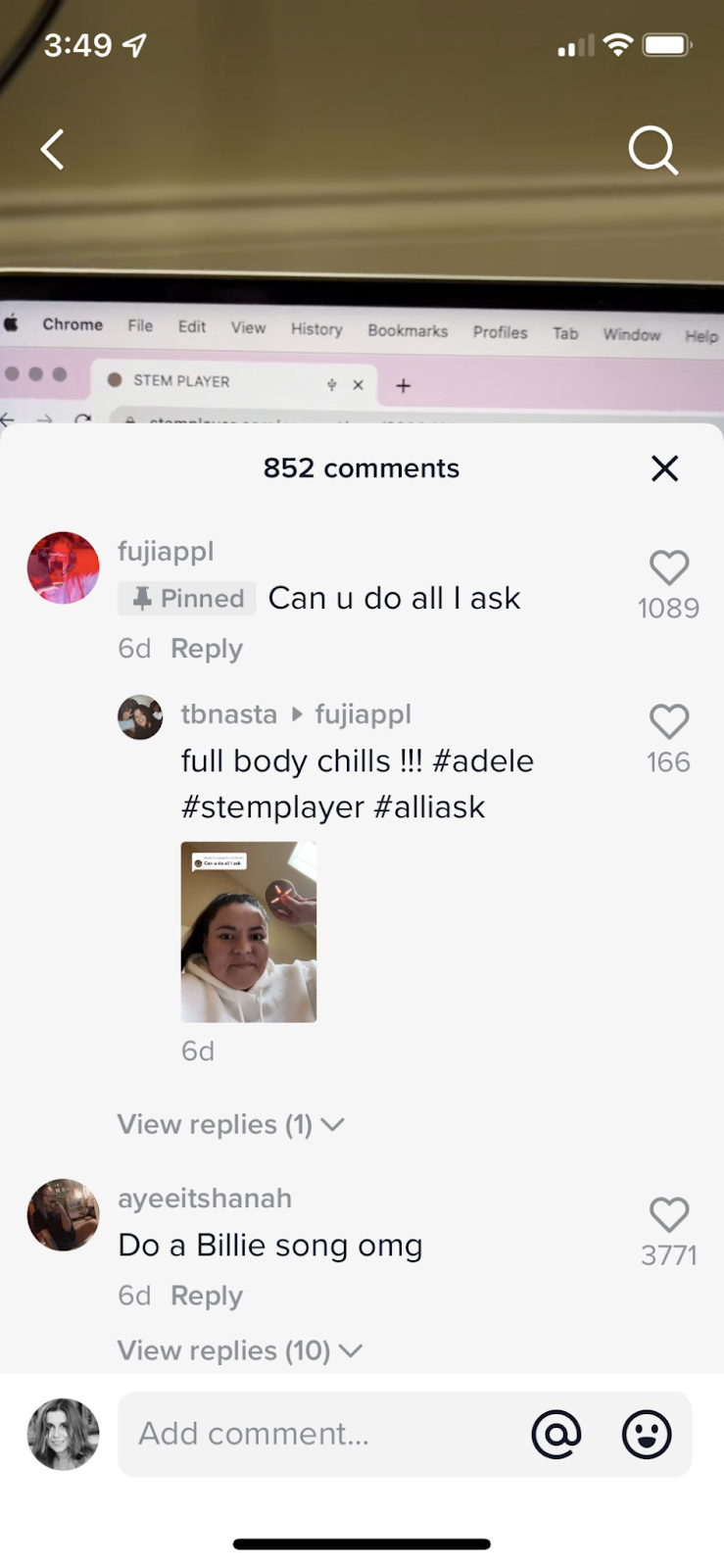TikTok Is Exploring Stories & Long Videos: Will Marketers Even Care?
When TikTok went viral in 2019, pulling in millions of global users nearly overnight, almost every major social media channel quickly pivoted attention to short-form videos.
While Instagram – which notably innovated on Snapchat Stories – launched Instagram Reels, YouTube – known for its longer-form videos – launched YouTube Shorts.
Now, TikTok seems to be taking on its biggest social media rivals yet again by exploring two familiar — but still surprising — features: TikTok Stories and 10-minute video capabilities.
If you love the short-form, in-feed, and non-ephemeral nature of TikTok’s platform, you might be surprised that they’re now launching features that other platforms are famous for – rather than continuing to make their own unique offerings.
You also might wonder, “Will these features make TikTok a more applicable channel for my brand?” Or, “Will TikTok’s Stories and long-form content go unnoticed and eventually be discontinued – just like Twitter Fleets?”
To help marketers try to determine if these features will make a difference in their TikTok or social media strategy, I’ll highlight how they work, why TikTok’s launching them, and if they pose any opportunities for brands.
We’ll discuss TikTok Stories first. But, if you’re just interested in long-form video instead, click here to jump down to that section of this post.
TikTok has expanded its Stories feature pilot after initially testing the feature in a few select countries like Brazil in Q1. While TikTok has not yet published a press release about Stories or pilot results, U.S. users began to see a notification announcing the feature on apps throughout the past month.

As many marketers already know, this pilot comes after most major social media platforms including Facebook, Twitter, Instagram, and even LinkedIn have launched or explored their own version of this feature.
What’s the Story with Stories?: A Quick History
At the HubSpot Blog, the evolution of Stories features across social media platforms has taught us one thing: When one platform develops a viral feature, other major platforms will follow suit with an incredibly similar option.
Stories began on Snapchat, the first well-known ephemeral app where users could create a series of videos or pictures on their profile – or a Snapchat Story – that would only show up for 24 hours. Users could also send “Snaps” or a series of disappearing Snaps to other users who could only see them when they opened their message.
Soon after Snapchat attracted millions of users with ephemeral content, Instagram launched Stories as a key part of its platform. Then, soon after that Facebook, LinkedIn, and even Twitter launched Story or Story-like features. While Facebook, LinkedIn, and Instagram still host Stories today, Twitter has disbanded its version – called “Fleets” and Snapchat has steadily lost interest from consumers and brands.
How to Publish a TikTok Story
If you are in the U.S. or another country where the feature is now available, creating a story is very similar to creating standard TikTok content.
1. Open TikTok’s Post tool.
First, you go to your profile and press the turquoise plus (+) on your profile picture, or go to your feed and press the Post button. You can also find a post button in the center of TikTok’s bottom navigation.

2. Make your content.
Create a video, or upload or take a picture. Then add any background music, text, or effects as you would with any TikTok video.

3. Determine if your content is a Story or TikTok.
When you’re done recording or selecting a photo, you’ll see two options: Post to Story and Next. Tapping Post to Story will automatically send it to your Story and For You feeds of other users.

One thing worth noting is that if you post a photo to your story, you’ll want to select a piece of music to go with it. Otherwise, TikTok will choose music automatically. In my case, this image was posted to my first test Story with an auto-selected Bruno Mars song.
If you tap “Next,” and don’t post the content to your Story, you’ll be sent to the last page you usually see before posting a permanent TikTok, which allows you to add a description to TikToks while also adding privacy and sharing preferences.
Because Stories are ephemeral, it seems that TikTok doesn’t allow you to add a description, hashtags, or privacy settings when you publish, which is important to keep in mind if your brand requires extra settings on your content.
Viewing a Story
There are three ways to view Stories. All are a bit tricky and sometimes rely on happenstance.
1. Sit back and swipe into new Stories.
Stories from people you follow or accounts you might be interested in will show up in the For You page feed of the TikTok app along with standard TikTok videos. While they might not have a hefty description, you can still follow the account that posted it or “Like” the content like a regular TikTok video. However, some features, like video replies, will be disabled because this content is meant to be ephemeral and will disappear after 24 hours.
2. Find Stories through “For You Page” navigation.
Open up TikTok and go to your For You page (a.k.a. your main feed). As you swipe through, pay attention to the engagement and sharing navigation buttons on the right of each video. When you see a profile picture with a turquoise ring around it, tap it to see the account’s story.

3. Find Stories on TikTok Profiles
Go to a profile of a TikToker you enjoy and look at their profile picture. If the ring appears around that profile picture, you can tap it and be sent to their story.

Should You Leverage Stories?
The jury is still out on whether Stories will become a hit on TikTok. From a simple swipe through my feed, it was pretty hard to find people who were actively using them already. However, this feature is still very new and could grow in use as more people become aware of it.
Additionally, when accounts do use Stories, it essentially feels like a temporarily published TikTok video. It’s also not clear yet if posting a series of videos to your Story will be as effective as posting permanent TikTok videos with a “Part 2” link in the comments.
For example, the screenshot below shows a TikToker linking a follow-up video in the comment thread of another TikTok video where she demonstrates how to use a STEMPLAYER to isolate the vocals in Adele‘s music.

Because of the engagement of Stories compared to linking permanent TikTok content together, some TikTok users might be more interested in growing their following and evergreen views with more permanent content.
Aside from lower usage, one thing that could also hold TikTok Stories back is the features barriers to discoverability on the platform. However, while it might not be as easy to find Stories right now because it is still in the pilot phase, this could change if the app fully embraces them with a Stories page or search features as Instagram has.
At this point, Stories shouldn’t be the reason your brand decides to go on TikTok. You’ll ultimately want to look at its entire assortment of features, audience, and consumer behavior to determine if your brand is a good fit.
However, if you already have a TikTok following and have time for light experimentation, posting a light-lift, on-brand test story likely won’t hurt your following. It’s possible that unconfirmed TikTok algorithms might even give you a boost.
Multiple high-performing TikTokers I follow say they expect to see TikTok Stories get a discoverability lift in various TikTok feeds as the algorithm might favor or push content that leverages new features. While TikTok hasn’t spoken about this at length or publicly, here’s some example of advice from a user with over 350,000 followers.
If you do experiment with TikTok Stories, here are a few things to keep in mind:
- Cater your Stories to TikTok’s audience and platform: Stories should be fast-paced, value-packed, or interesting in another way to the TikTok audience.
- Stories will need promotion: It can be incredibly easy to miss Stories because there is not a designated location for them on the app. Users primarily know a Story is available when a profile image is outlined on the right navigation of a TikTok video. If you have a story you want people to see, consider making a TikTok that goes over the topic and encourages people to watch that story.
- Determine if views or followers are most important: One way many accounts gain followers is when users click the plus sign on the profile icon that appears in video navigation. But, when you publish a story or launch a live event, tapping the profile picture just leads to this content. This is important to keep in mind if you want to gain followers quickly.
Long-Form Video on TikTok
In 2022, TikTok enabled all users the ability to add videos that were up to 10-minutes long. The company began exploring long-video features in the summer of 2021 by allowing just a select group of users to use them first. In its initial announcement of the long-video pilot, TikTok explained that the move aimed to give creators more tools and flexibility.
“Creative expression brings people together. It’s how we connect with our communities. It’s how we entertain, educate, inform, and inspire each other. This is also why we’ve focused on providing our community with a range of tools to help unleash their creativity – longer videos are now one more tool people can use to captivate the community with their creative expression,” read the statement.
Since then, the feature eventually rolled out to all users – who can now create videos that are up to 10 minutes long. And, to many of us, this continued rollout is still a bit surprising.
When TikTok began to go viral as a host for 1-minute videos, it seemed like an answer to Vine, a once viral and notably discontinued short-form video app. Even as viewership grow, TikTok still kept videos short by only eventually allowing a max of three-minute videos. Not only has TikTok strayed away from long-form in the past, but the platform’s virality led many brands and social media channels to recognize how consumers were shifting to short-form video consumption.
While a post from TikTok explains that videos over one minute long have driven more than 5 billion global views, the platform still seems driven by short-form content, aside from occasional live streams that appear in the For You feed.
Why is engagement so important? While TikTok might give an unconfirmed initial boost to creators who use its new features, the company has shared that its algorithm is partially driven by engagement. Content with lower engagement will be deprioritized in its feed. Thus, if someone posts a video that feels too slow to start, boring, or too long, they could swipe to the next video in the feed before it ends, avoid liking or commenting on it, and might not follow the account holder. As a result, the content could be deprioritized.
While this shouldn’t necessarily discourage you, it shows that you should still be strategic about what you’re posting on TikTok’s fast-paced platform and how long it really needs to be to grab attention and engagement.
Should You Post Long TikToks?
While slightly longer TikTok videos or even TikTok Live could be a great way to engage your TikTok while also potentially getting an algorithmic boost from the app, keep in mind that much of TikTok’s audience tends to prefer things short and sweet.
If you do want to test out a longer video, you can simply go to create a TikTok and film or upload content that’s up to 10-minutes long.
Ultimately, you’ll receive solid engagement and memorability on fast-paced apps like TikTok if your videos quickly and concisely pull viewers into the action and give them all the key information they need. If you do go beyond three minutes, your content will need to be incredibly interesting. Otherwise, the second a user loses interest, they’ll move on to the next video with just a quick swipe of their finger.
TikTok Pivots: Desperation or Competitive Maturity?
When TikTok first went viral, it was the go-to app for short-form videos. But now, as it matures at the top of app store and website charts, it’s starting to become a go-to platform for all things video.
And, while TikTok expanding to Stories and long-form videos might seem like a surprising play, the brand isn’t necessarily wrong to test these popular social media features.
Ultimately, once virality has been reached, platforms need to expand to have sustainable growth. Why? Because older competitors will likely copy or innovate on the unique features of smaller or newer platforms.
In 2019 and 2020, TikTok was in that situation. Although the app was viral and getting huge attention from brands, competitors like Facebook, Instagram, YouTube, and Twitter quickly began testing short-form video features. Yet, TikTok’s successfully kept growing and competing with these channels because of its continuous pivots, pilots, and evolutions. Essentially, TikTok is doing exactly what its competitors have done to capitalize on its features.
While TikTok was once that cool, edgy app that some had ever seen anything like before, it’s maturing into a channel that millions of people use daily. Sometimes, remaining relevant as you grow means you must release and test both never-before-seen and competitive features.
Is TikTok Right For You?
While some brands aren’t the best fit for TikTok and others still need to learn more about the platform to leverage it, this platform isn’t going away any time soon and it’s constantly growing and changing. Even if long-form content and Stories don’t become a hit on the app, the platform might still be relevant for your brand one day and is worth keeping on your radar.
It’s ultimately up to you to decide whether these features will intrigue your TikTok audience or if TikTok is even right for you. For more help on that front, download the free resource below.
![]()


![Free Ebook: The Marketer's Guide to TikTok for Business [Download Now]](https://no-cache.hubspot.com/cta/default/53/2c7242e4-ad54-4f63-8627-a15aa6a2ea50.png)
